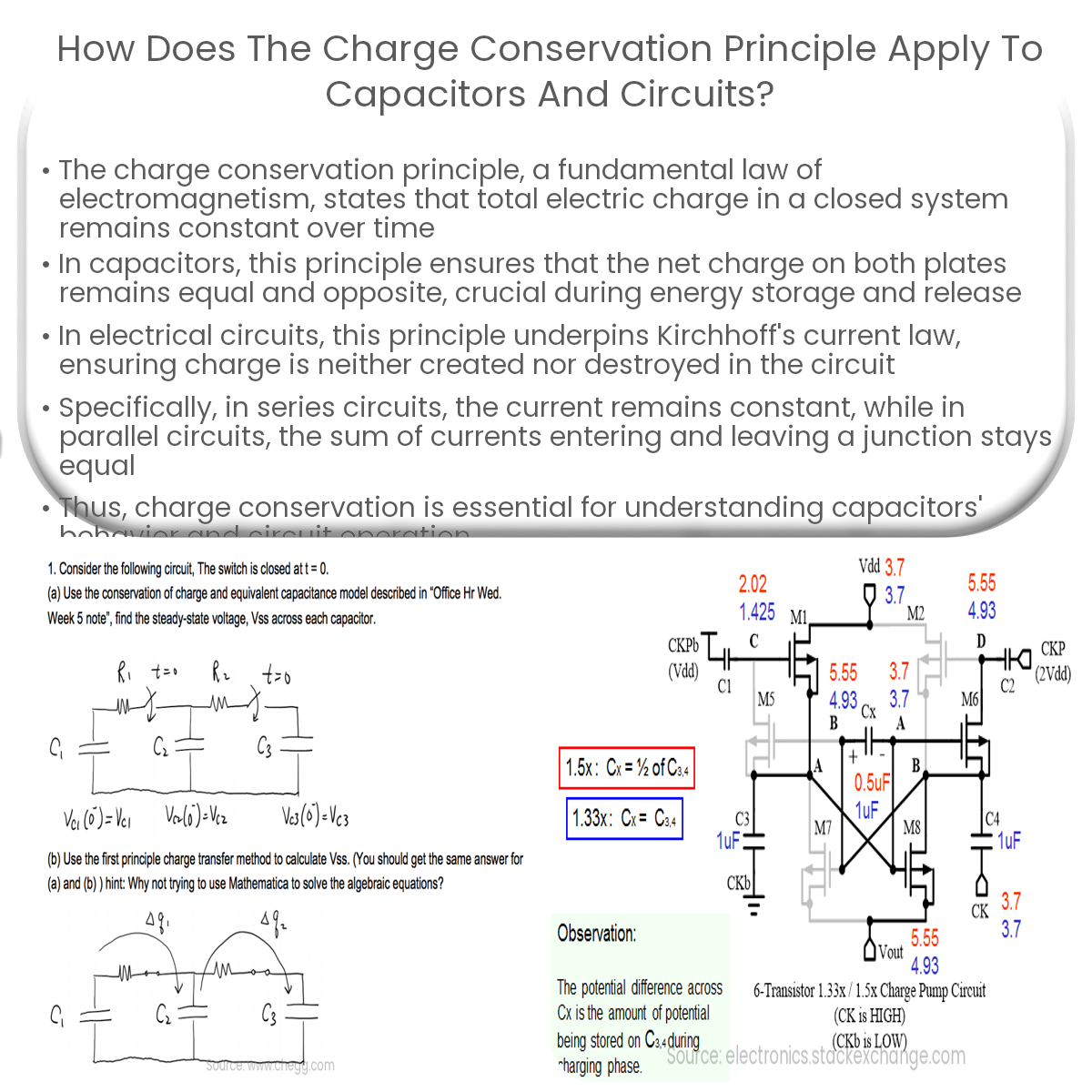Charge conservation ensures the total electric charge in capacitors and circuits remains constant, governing energy storage, release, and charge flow.
Charge Conservation Principle in Capacitors and Circuits
The charge conservation principle is a fundamental law of electromagnetism stating that the total electric charge within a closed system remains constant over time, neither created nor destroyed. In the context of capacitors and circuits, this principle is crucial for understanding their behavior and operation.
Capacitors and Charge Conservation
A capacitor is a passive electronic component that stores energy in an electric field between two conductive plates separated by an insulating material called a dielectric. When a voltage is applied across the capacitor, positive charges accumulate on one plate while an equal amount of negative charges accumulate on the other plate. The charge conservation principle ensures that the net charge on both plates always remains equal and opposite.
During the charging process, the current flows into the capacitor, and the electric field between the plates increases, leading to energy storage. Conversely, when discharging, the current flows out of the capacitor, and the electric field decreases, releasing the stored energy. Throughout this process, the charge conservation principle is maintained, ensuring that the total charge within the capacitor remains constant.
Charge Conservation in Circuits
In electrical circuits, the charge conservation principle plays a vital role in ensuring the continuous flow of electric charge. According to Kirchhoff’s current law, the sum of currents entering a junction in a circuit is equal to the sum of currents leaving the junction. This law is a direct consequence of the charge conservation principle, as it ensures that charge is neither created nor destroyed at any point in the circuit.
In conclusion, the charge conservation principle is a fundamental concept that governs the behavior of capacitors and circuits. By ensuring that the total electric charge within a closed system remains constant, this principle provides a foundation for understanding the flow of charge in capacitors and the operation of electrical circuits.

